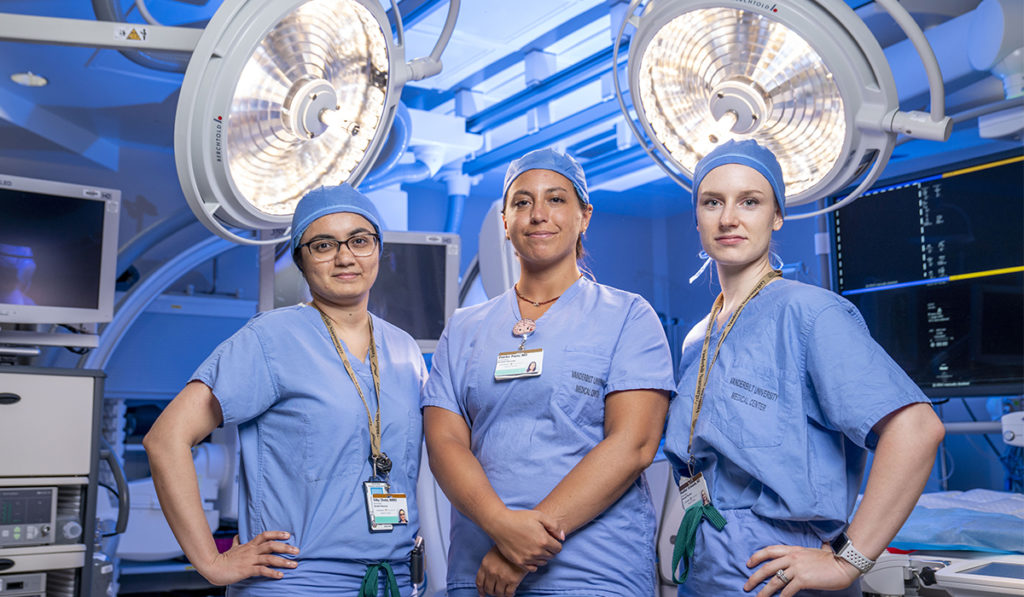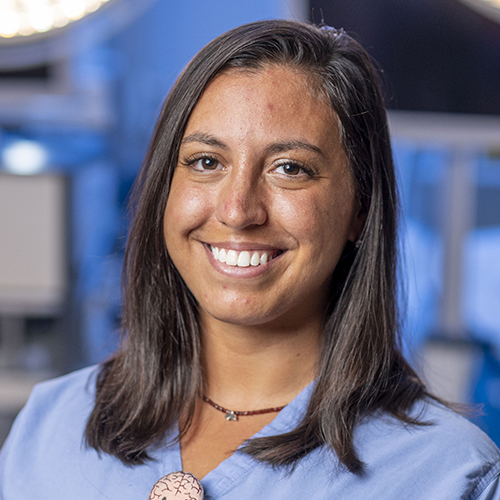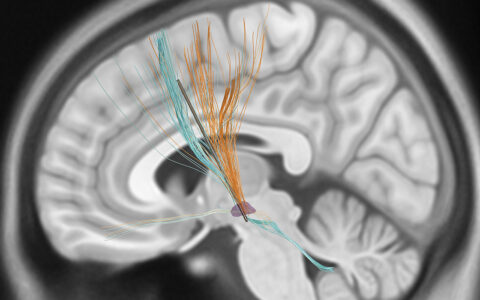In 2017, for the first time in the Vanderbilt University Medical Center neurosurgery department’s history, each physician who matched to the three-person residency class was a woman.
“It was an exciting surprise,” said Lola Chambless, M.D., the neurosurgery resident program director and an associate professor of neurological surgery at Vanderbilt. “We’ve never had more than one woman in any individual class.”
“We’ve never had more than one woman in any individual class.”
“We’re on the rise and I’m proud to be a part of that movement,” said Danika Paulo, M.D., one of the members of the all-female class, alongside Silky Chotai, M.D.1, and Heather Grimaudo, M.D.2
The all-female resident class has brought a different feel to the department, shining a beacon on the benefits of diversity. To keep pursuing that promise, Chambless and colleagues are exploring methods of reducing bias within the residency match process.
An All-female Year
Despite the fact that women account for roughly half of medical school graduates nationally, less than 18 percent of neurosurgery residents, and less than nine percent of board-certified neurosurgeons, are women.
In addition to the Vanderbilt class, there have only been two other all-female neurosurgery resident classes in the U.S., one at Johns Hopkins University and another at the University of Southern California.
In a male-dominated field, one unique aspect to the influx of female residents is the chance to feel completely included. “When you have a year that’s all-female, it really changes the sense of fitting in all of a sudden,” Chambless said. “Instead of trying to fit in with all the guys, it’s now okay for you to feel like you’re one of the girls.”
The increase in diversity has caused a ripple effect of benefits. “For the male residents, bringing in this class enabled them to really grow in their ability to mentor and teach people with a different background and a different set of experiences than them,” Chambless said.
Reducing Bias
To further foster diversity and reduce unconscious bias, Chambless and colleagues have been testing a new approach to residency interviews.
“Typically, the majority of neurosurgery resident interviews are one-on-ones between a faculty member and a resident applicant,” Chambless said. “This year, we had our associate program director and a pair of residents doing a standardized interview, and everyone else involved in interviewing the applicants was using the traditional interview model.”
For the standardized interview, Chambless and colleagues developed a set of questions and a corresponding answer scale based on the traits the department wants to see in their residents. The person leading the standardized interview takes the applicant through the established questions and then reports a score.
“This way we have a metric for the applicant that is based only on the applicant’s responses and has nothing to do with their board scores, their research experience, or anything else in their application,” Chambless said. “Our goal was to reshape the interview process in order to get deeper into our knowledge of someone.”
“This way we have a metric for the applicant that is based only on the applicant’s responses and has nothing to do with their board scores, their research experience, or anything else in their application.”
Approval from the Institutional Review Board was obtained before testing the standardized format, and Chambless intends to compile the results for publication.
Supporting Women
Supporting women to prevent attrition is another pressing issue in the neurosurgical field. Chambless has previously reported in the Journal of Neurosurgery that female neurosurgery residents have a much higher attrition rate (18.5 percent) than male residents (10.4 percent).
Of the factors that affect surgical career choices for women, studies show that a lack of female role models, perceived male bias, and sexual harassment are among the top.
Chambless, who did not meet a female neurosurgeon until she was a 5th-year resident, says she was fortunate to have had male mentors who demonstrated how to be a neurosurgeon and an involved parent. She finds it encouraging that the field is better at guiding current medical students and residents to mentors, and that the students themselves are intentional about seeking out mentors.
However, “the problems of being a female surgeon are not yet solved,” Chambless said. “When I talk among experienced female surgeons, every one of them has a story. But a lot of men underestimate how much gender bias and harassment we are still facing.”
“Increasing female prevalence translates into more role models that will inspire future female neurosurgeons and eventually close this gender gap,” Paulo said.






